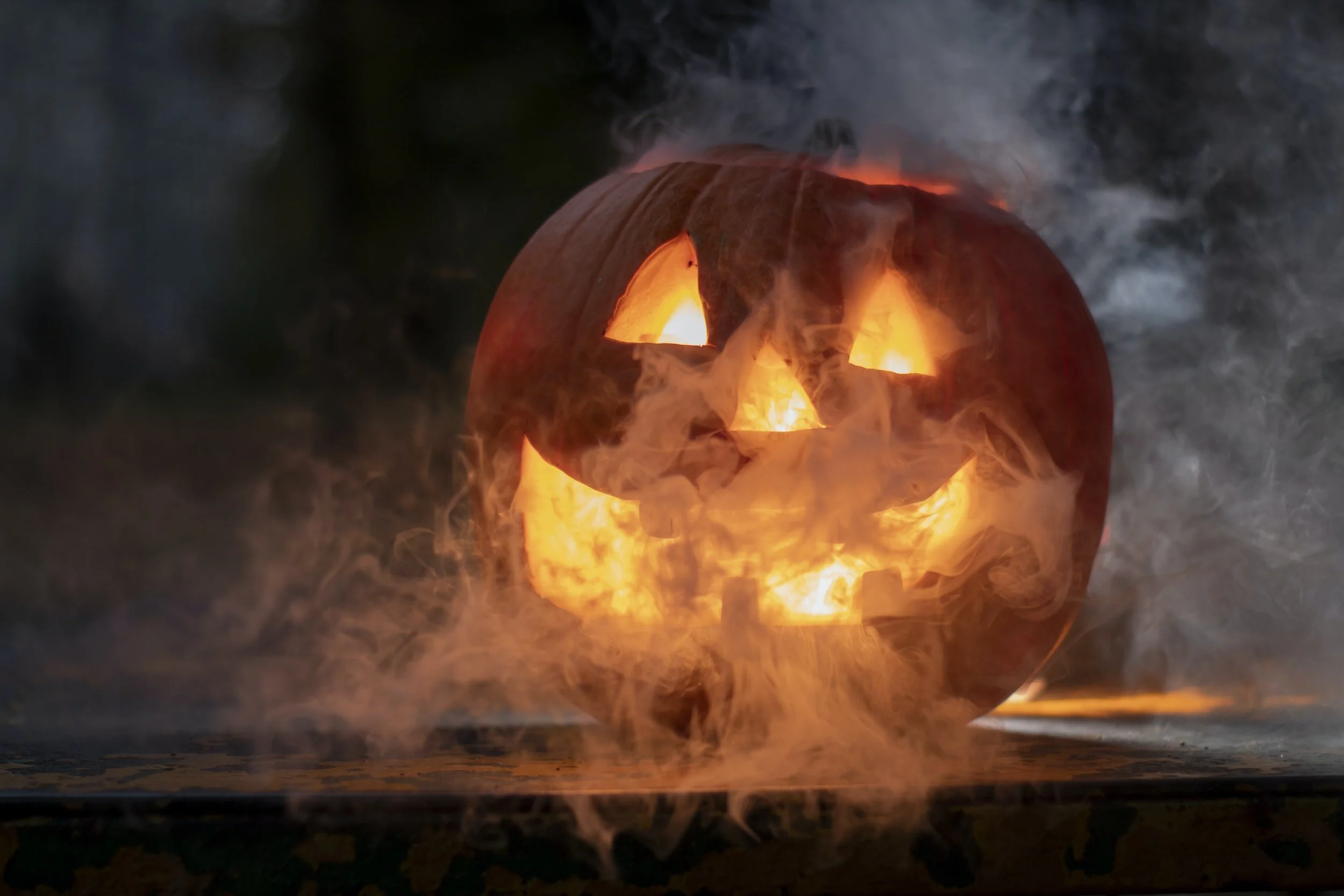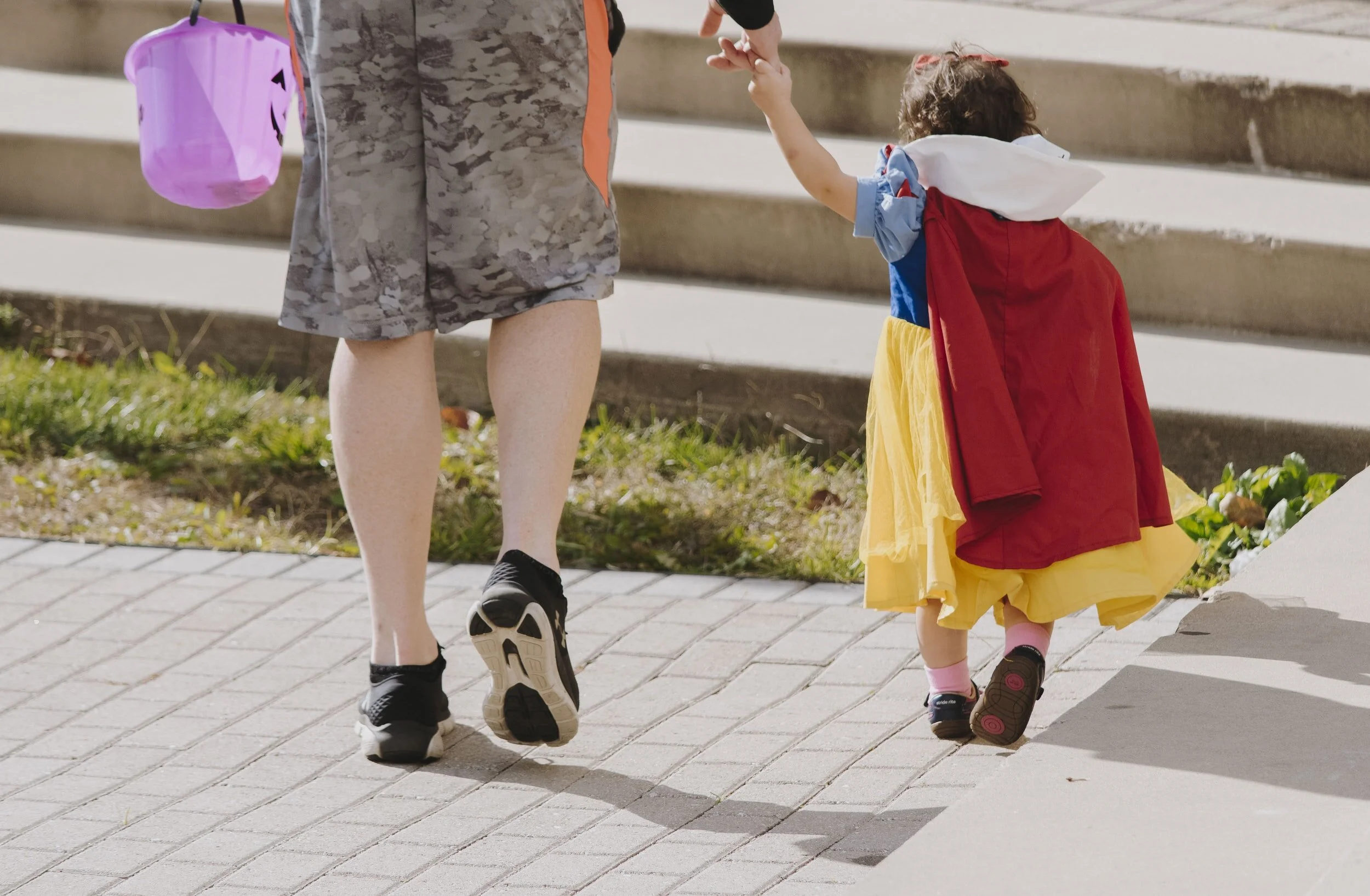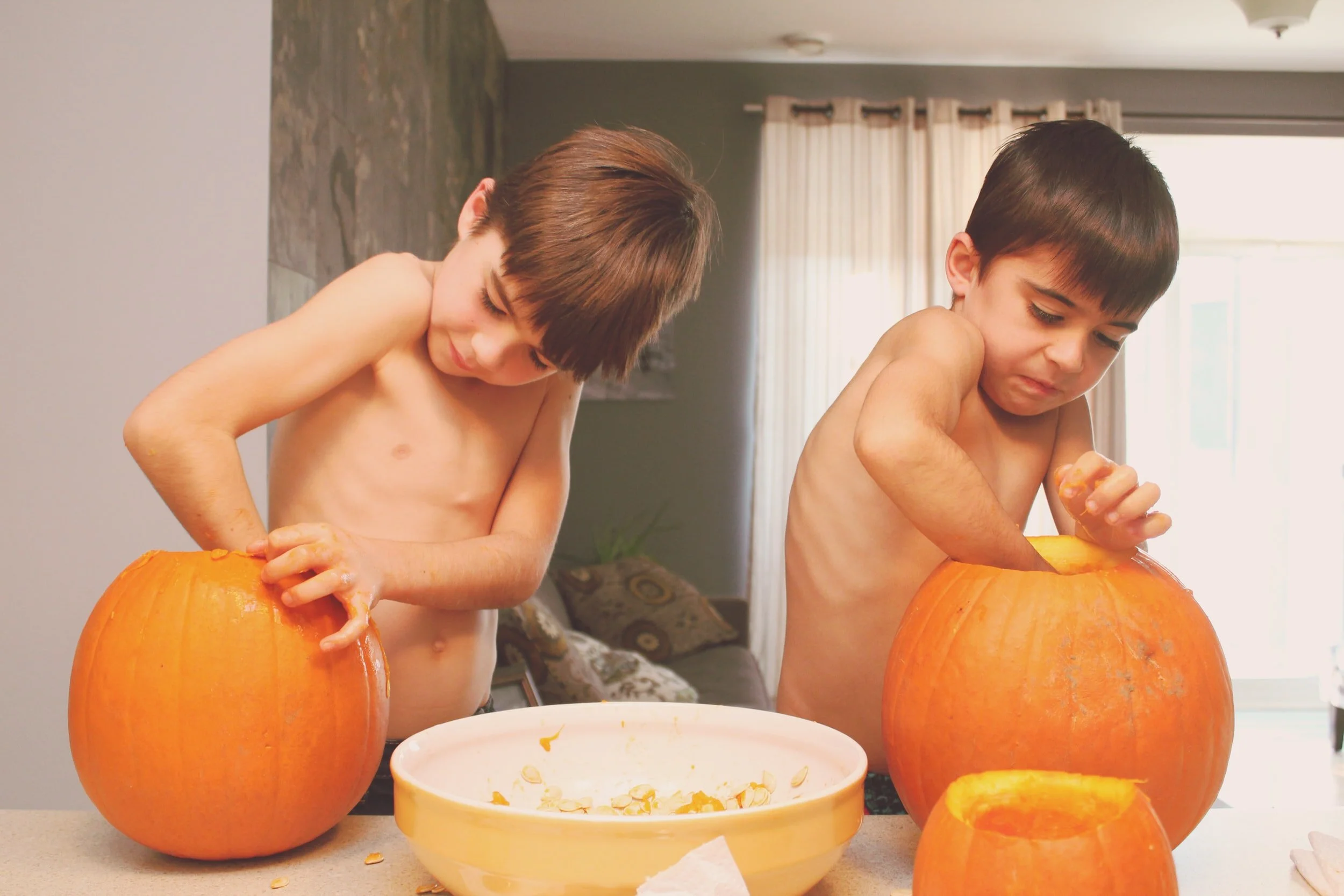Maybe it’s just me, but I love a good baby Halloween costume. I started researching them long before I became a parent, and I’m excited to have at least a year or two of freedom to dress my baby up without objections from him about my style decisions. Eventually, though, all good things must come to an end.
As children grow up and begin to develop their own (strong) opinions about things, including Halloween. What if your child’s views are not so enthusiastic? What if they are downright scared of Halloween? You may be wondering if it’s okay to push them to face their fears so they don’t miss out on any fun—or keep their siblings from having a good time. On the other hand, you don’t want to overwhelm your poor kiddo by subjecting them to an evening of skeletons and eyeballs.
What’s a parent to do? Let’s take a look at a few strategies to help children who are afraid of Halloween feel secure enough to (gently) try out some spooky fun.
Is it Normal for Kids to Be Afraid of Halloween?
If everyone else’s children are eagerly jumping into their Pennywise costumes or laughing with glee at the scary chainsaw man on the haunted hayride, you may wonder if it’s normal for your child to feel so scared.
When you stop to think about it, many Halloween traditions are very weird and unlike our normal day-to-day life. It’s a day deliberately intended to scare people. On Halloween, kids get to do a lot of things they aren’t allowed to do any other night of the year, like walk around the neighborhood in the dark and take candy from strangers. No wonder some kids have a hard time adapting.
I wonder if the abundance of scary games, movies, and other content geared towards children has led to more kids fearing Halloween. I can’t tell you how many kids have come into my therapy office deathly afraid of characters like Pennywise, Annabelle, or the cast of Five Nights at Freddy’s. Even creepy memes can have a lasting effect on kids. Remember Momo? She was a major subject in my office for about 6 months in 2019.
I do think it’s worth mentioning that while mild anxiety is totally normal and understandable, extreme anxiety may be a different story. A child who is creeped out by Halloween decorations or who is hesitant to go trick or treating is experiencing pretty typical fears. On the other hand, if your child is so paralyzed by fear that they have nightmares the entire month of October, or refuse to go to public places because they might have decorations up, she may be dealing with a more severe phobia that could use some outside help.
How to Help a Child Who is Scared of Halloween
We all want to protect our children from harm and help them avoid upsetting experiences when we can. That said, please don’t wrap your child in psychological bubble wrap and avoid all things Halloween-themed. While this might help your child (and you) feel less anxious in the short term, it is likely to make your child’s fears stronger and more persistent over the long term.
Anxiety makes us want to avoid the things that scare us. We get the sense that something terrible will happen if we don’t. The problem is that every time we avoid something scary, we reinforce the idea that it is worth being afraid of. The longer a child avoids a scary situation, the harder it will be to return to it when the time comes. This is why it can be so hard to go back to school after summer vacation, and why so many kids developed separation anxiety after months of togetherness during quarantine.
To help an anxious child, we want to:
Let them know their feelings are normal and okay
Talk, read, and play about feelings and scary things
Clear up any misunderstandings that might make anxiety worse
Support them in gently and gradually facing their fears
Let’s see how we can apply those ideas to help a child who is afraid of Halloween.
Practice in Advance of the Big Day
The best time to start addressing Halloween anxiety is not October 30th. I say this knowing full well that this blog post will go up on October 30th, the night before Halloween. But, I am assuming that you are likely reading this blog post at some future time. Hopefully, Future You has decided to Google this issue in September or early October, which gives you plenty of time to prepare.
Kids learn and make sense of things around them through repetition and play. Ever seen your child act out the same game over and over for a week and then move on to something else? They’re learning! Children also thrive on routine, which helps the world feel more predictable and safe. Repeated conversations about Halloween traditions helps children learn what to expect, and takes away the element of surprise that can be so frightening.
Reading books about Halloween together is a great way to facilitate conversation. As an added bonus, books are a gentle form of exposure for anxiety. You are gently showing your child that he can handle talking and thinking about scary subjects, and you’ll be right there to support him.
Talk About the Difference Between Real and Pretend
Little kids have a hard time distinguishing between fantasy and reality. Their imaginations and ability to “make believe” can add a lot of magic to childhood. On the flip side, it can also add a lot of fear!
Older kids and adults can delight in scary movies because they know that there’s no chance of Godzilla lurking around the corner when they leave the theater. Pretend scary stories let us experience the adrenaline rush of a good scare at a time when we know that nothing bad can actually happen. Imagine how it must feel if you aren’t so sure the Godzilla won’t be there!
You can use TV shows and movies as an opportunity to show your child that the stories are pretend, and the actors are playing make-believe. Mister Rogers once invited the actress who played the Wicked Witch of the West onto his show to teach this exact concept. Onscreen, the actress showed how she put on her costume and makeup, and used a pretend scary voice to play the part. In reality, she was a really nice lady! You can talk with your child about how actors use makeup and costumes to look scary, when really they are normal people—there’s plenty of videos of actors in and out of costume to back up your point.
Use Exposure to Make Scary Items Feel Familiar
Exposure is a big part of the kind of therapy I practice for kids with anxiety, called Cognitive Behavioral Therapy. In exposure, we help a child face unhelpful fears, but we do it in a gradual way. This helps kids build up their confidence, and learn to tolerate anxious feelings without becoming totally overwhelmed.
You can practice exposure at home by giving kids a chance to look at and handle scary Halloween props in small doses. This could mean taking the scary mask from a sibling’s costume out for your younger child to handle and play with. It could also mean walking on the opposite side of the street from a Halloween display to view it from a safe distance before getting closer. It often helps to make these exposure situations funny: try talking with your child in a goofy witch voice, or encourage them to make fun of a monster that frightens them. It’s hard for things to be both funny and scary at the same time.
Involve Your Child in Halloween Prep
Helping your child participate in Halloween traditions in an age-appropriate way gives them another opportunity for exposure. It’s also another chance to highlight the difference between real and pretend by showing kids how things are made. A glowing jack-o-lantern seems a lot less intimidating when you saw the pumpkin that was scooped and carved to make it.
Giving your child a role in the Halloween festivities allows them to feel a sense of control over the situation. You can let your child pick out your decorations, play their choice of music, and decide what snacks to enjoy or what candy to give out to trick-or-treaters. Feeling in control can ease anxiety, and getting to pick out all the details might give children an added motivation to participate.
Fun is Most Important!
Okay, so I’ve gone on and on in this post about the importance of exposure and facing your fears. All of that is true! But also…Halloween is a holiday, and it’s one day a year. While I encourage you to gently help your child overcome Halloween anxieties, there’s no need to push them so far out of their comfort zone that the holiday stops being fun.
We’re looking for progress, not perfection. Maybe this isn’t the year that you go trick-or-treating in the neighborhood that goes all out for Halloween with super gory decorations. Maybe your young child would be more into a casual daytime party with friends rather than a nighttime trek with the big kids. Some aspects of Halloween may just be too intense for young or sensitive kids to handle, and that’s perfectly okay.
What’s most important is communicating to your child that having anxiety is okay, and that we don’t always have to do what it tells us to do. By staying calm and finding small opportunities for exposure, you are showing your child that you can handle their big feelings. They may be terrified of the ghost hanging on the neighbor’s house, but you aren’t!
Help for Anxious Kids in Davidson, NC
Do your child’s anxieties extend past Halloween? If you’ve got a sensitive kid who is prone to big feelings, it might feel like there’s a minefield of situations you have to tread carefully around to avoid triggering a meltdown. If anxiety is getting in the way of your child living their best life, counseling can help make things more manageable.
I am a former-anxious-kid-turned-therapist who loves working with children and tweens. I see kids in person for CBT and play therapy at my office in Davidson, North Carolina, just outside of Charlotte. If you aren’t close by, we may still be able to work together! I see kids throughout North Carolina, New York, and Florida for online therapy. If you’re not sure you’re ready to start therapy, or need some basic help right away, check out my coping skills course for anxious kids and tweens.
If you’re ready to start child anxiety therapy, drop me a line. I’m always happy to hear from you.





